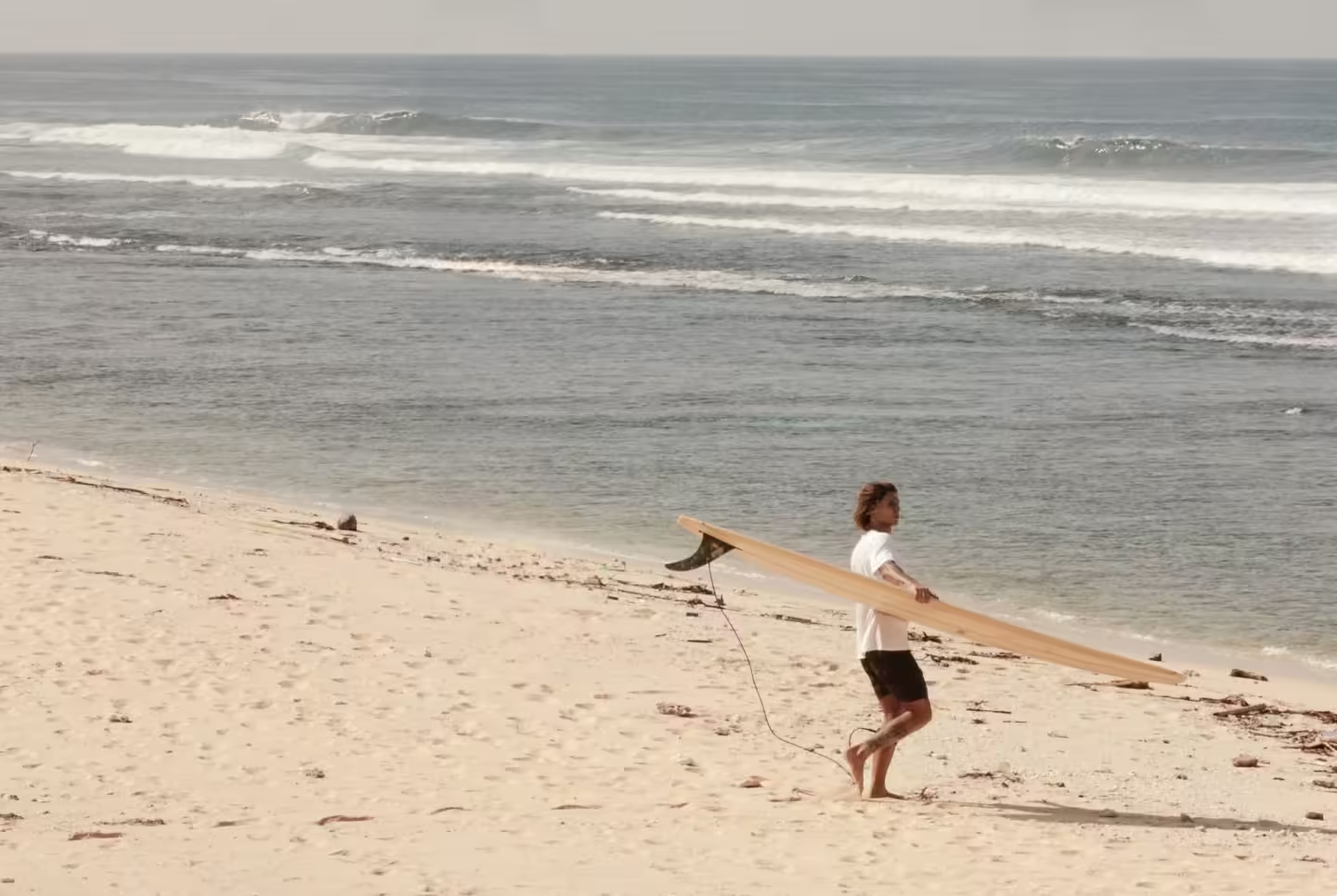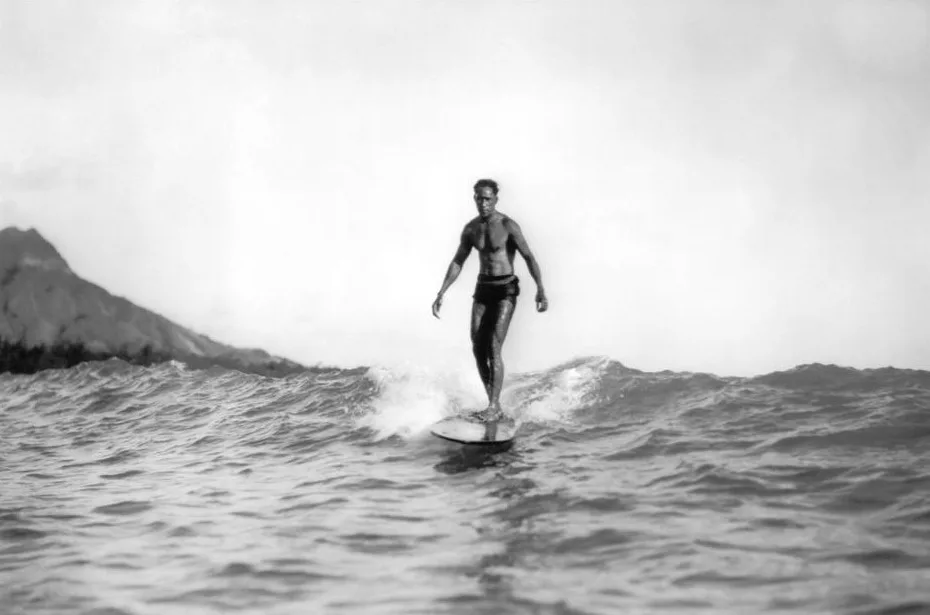The History of Surfing And Its Origins – How It All Started
When most people think of surfing, they picture the sunny beaches of Hawaii, California, or Australia.
And while these 2 places are indeed popular for riding waves, the activity of surfing actually has a very ancient history.
Actually, did you know that surfing is one of the oldest sports in the world? You may be surprised to find that surfing has a deep and long history that most surfers today are unaware of.
If you still remain with some open questions like where who, and why was surfing invented in the first place, you came to the right place. In this blog post, I will showcase the history and origins of surfing.
Buckle up, we’re traveling in time!
Where Was Surfing Invented
Surfing is vastly popular in Hawaii and California, which probably creates the assumption that surfing was invented there.
But in order to accurately tell the story of surfing history, we have to start from the beginning. Let’s travel in time, back to the ancient Moche civilization from Peru.
Peru
Archaeologists have found evidence of using a watercraft back to Pre-Inca cultures from three to five thousand years ago and the Moche culture used a type of water vessel as early as 200 CE.
In his 1590 book “Natural and Moral History of the Indies,” José de Acosta gave an early account of Inca surfing.
That’s the earliest documented writing, coming from Peru. However, it was not quite surfing per se, as these watercraft are more similar to stand-up paddleboards than surfboards.
Polynesia
The first noted evidence of surfing history that is more similar to what we call surfing today, can be traced back to 12th-century Polynesia.
Various cave paintings have been discovered that clearly describe ancient surfing. The British explorer, James Cook noted it in his journal from 1769.
Surfers were a foreign concept to James Cook and his crew when they spotted men riding the waves on planks of wood.
Although Cook’s diary offers readers insight into sailing the Pacific, Europeans at that time knew nothing about surfing.
In fact, they were concerned for the surfers’ safety, thinking the waves would crash them against jagged rocks near shore.
With many different aspects of the Polynesian culture, they were the ones who brought surfing to Hawaii, where it became popular.
To summarize, there is no doubt that ancient Polynesia is the birthplace of surfing, but nowhere is this more prevalent than Hawaii.
If you asked people what Hawaii was best known for, the most popular answers would likely be beaches, aloha shirts, ukuleles, and surfing.
And even though Hawaii is widely associated with all of these, surfing was actually invented in Polynesia.
Who Invented Surfing
There is no official answer to who invented surfing. We can only imagine who tried surfing for the first time and even when that initial attempt occurred.
Judging by the history timeline, we can only assume the creator was of Polynesian descent; however, that is merely an educated guess.
Although we do not have much information about the first surfer, we can follow history to see who else was key in making surfing what it is today.
When European settlers first arrived in Hawaii, the locals were discouraged from surfing and the Christian settlers refused to participate. As a result, surfing lost its popularity.
Even though the Europeans were not interested in it, the locals still viewed it as an important part of their culture and refused to stop surfing entirely.
By the end of the 19th century when tourism started to develop and became more popular, surfing made its huge comeback.
It was then that people from around the world were introduced to surfing for the first time and realized how awesome surfing is, and it gave a massive boost to Hawaiian tourism.
Then came this dude – Duke Kahanamoku. Duke was one of the most well-known early players of surfing in the modern era.
He was born in 1890 and quickly gained notoriety for his skill as a surfer and Olympic swimmer. “The Duke”, was what they call him, and he was one of the best surfers of that time.
Duke rose to prominence as an athlete and, once he did, decided to go on a world tour in order to show off his skills and spread the love of surfing.
He traveled from California to Australia, surfed every possible wave, and caught the attention of thousands of eager viewers at the beach. He literally popularized Hawaiian surfing culture by his own hands (or feet).
While The Duke didn’t invent surfing, he did promote it in a massive way and was therefore influential in its development.
His athleticism and excitement for surfing caused more people to take notice of it, more than ever before. In surf history, if anyone deserves the title of “The Father of Surfing,” it is him for sure.
Why Was Surfing Invented
There is no definitive answer to this question, as there are several theories about why surfing was invented.
One theory suggests that surfing was created as a way to travel between islands, while another theory states that surfing was invented as a form of transportation for fishing.
It is mostly related to the ancient Moche people that were using a kind of vessel to surf the ocean, but not entirely for the enjoyment of surfing waves.
Yet another theory suggests that surfing was created as a form of recreation and entertainment, which connects to civilizations that used to see surfing as a spiritual ritual or ceremony.
No one can say for sure which of these theories is correct, but it’s clear that surfing has been around for centuries and has evolved over time into the sport that we know today.
How Hawaiian Culture Impacted Surfing?
I noticed I had little to almost no mentions of the nation of surfing as we know it today – Hawaii.
History reveals that because of the oppression that European settlers put on Hawaiians during the 19th century, surfing lost its popularity.
Consequently, there was little enthusiasm for it and this time is called the “dark age” in surfing history. Even though it became less popular, people never stopped surfing completely.
Surfing became a popular tourist activity in Hawaii during the late 19th century. This newfound interest led even notable authors like Jack London and Mark Twain to give it a try and it seemed like everyone wanted in on this exciting new sport.
In the 1960s, surfing’s popularity exploded due to massive media coverage. The Beach Boys were one band that contributed to this by writing songs about surf culture, which we know now as a laid-back lifestyle.
When Hawaii became a state in 1959, Americans were more fascinated than ever with the idea of riding waves off the Hawaiian coast.
This emerging popularity of surfing did a lot to help grow the West Coast surf scene while also positioning Hawaii as the premier destination for surfers everywhere.
Today, Hawaii is still a well-known spot to catch some serious waves and the Hawaiian culture plays an integral role in surfing’s history and popularization.
Hawaiian culture was a key factor in the development of modern surfing, it has given us the aloha spirit and is responsible for many aspects of what makes surfing so unique today.
It was Hawaiians who developed a style of riding waves that we now call surfing, which focuses on grace, balance, and joy.
Hawaiian culture also heavily influences the etiquette of surfing, with many surfers showing respect to others in the water by offering waves, taking turns, and remaining courteous.
And in addition to its influence on style and etiquette, Hawaiian culture has also shaped the language of surfing, with many terms being of Hawaiian origin.
Conclusion
Even though we have a few open questions, one thing is certain – surfing has been around for centuries, and it continues to be a popular activity today.
Ancient Polynesia and the Hawaiian culture have had a huge impact on modern surfing, from the way it is ridden to its unique culture and language.
For many, surfing provides not just a way to stay active, but an opportunity for excitement, adventure, and lifestyle.
Hang ten, hang loose, enjoy the vibes, and everything will look much brighter to you.



